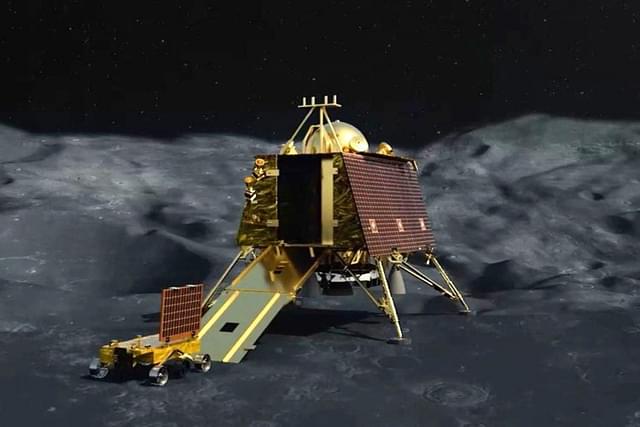The Indian Space Research Organisation (ISRO) has successfully conducted the
Pushpak Reusable Landing Vehicle (RLV) LEX 02 landing experiment.
More on the news
- Pushpak Reusable Landing Vehicle (RLV) LEX 02 landing experiment was
successfully conducted at the Aeronautical Test Range in Chitradurga,
Karnataka.
- The RLV LEX 02 landing experiment is the second of a series of experiments
conducted by the ISRO.
The first mission RLV-LEX-01 was accomplished in April 2023.
RLV-LEX-02 demonstrated the autonomous landing capability of RLV from
- off-nominal initial conditions at release from a Chinook Helicopter
- The winged vehicle called ‘Pushpak’, was lifted by an Indian Airforce Chinook
helicopter and was released from 4.5 km altitude.
- The mission successfully simulated the approach and high-speed landing
conditions for RLV returning from space.
Significance of the mission
- With this second mission, ISRO has re-validated the indigenously developed
technologies in the areas of navigation, control systems, landing gear and
deceleration systems essential for performing a high-speed autonomous landing
of a space-returning vehicle.
Reusable Launch Vehicle – Technology Demonstrator (RLV-TD)
- A reusable launch vehicle is a space shuttle that can travel from low earth orbit
(LEO) to outer space to deliver payloads and return to Earth for use again.
- ISRO’s first demonstration was conducted successfully in 2016 with a
demonstration of the winged vehicle RLV-TD in the HEX mission.
- The winged RLV-TD has been configured to act as a flying test bed to evaluate
various technologies, namely, hypersonic flight, autonomous landing and
powered cruise flight.
- The major advantage of RLV is Cost Reduction: Once an RLV completes a
mission, it returns to the earth and can be used again.

The International Astronomical Union (IAU) approved the name of the Chandrayaan3’s lander Vikram landing site ‘Shiv Shakti’.
Why News
- The announcement defined the origin of the name as, a "compound word from
Indian mythology that depicts masculine (Shiva) and feminine (Shakti) duality
of nature".
- Last year on August 28 2023, the Prime Minister of India announced that the
landing point of the Chandrayaan-3 Mission would be known as “Shiv Shakti
Point”
- While the Chandrayaan-2 landing failure spot (lander Vikram crashed) will be
called “Tiranga point". Chandrayaan-1’s moon impact probe (MIP) had touched
the lunar surface on Nov 14, 2008. The site was called “Jawahar Point” or
“Jawahar Sthal”
- The day of the touchdown of the Vikram Lander on the Moon (August 23) will
be celebrated as “National Space Day” in the country.
- The International Astronomical Union (IAU) has named an asteroid, discovered
in 2006, after Indian classical singer Pandit Jasraj. The asteroid, or more
formally known as a minor planet, is located between Mars and Jupiter.
IAU’s Nomenclature criteria
- Rule 6: Individual names chosen for each body should be expressed in the
language of origin. Transliteration for various alphabets should be given, but
there will be no translation from one language to another.
- Rule 9: No names having political, military or religious significance may be
used, except for names of political figures before the 19th century.
- Rule 11: When more than one spelling of a name is extant, the spelling
preferred by the person, or used in an authoritative reference, should be used.
Diacritical marks are a necessary part of a name and will be used.
International Astronomical Union (IAU)
- It is a non-governmental organisation founded in 1919
- Its mission is to promote and safeguard the science of astronomy in all its
aspects, including research, communication, education and development,
through international cooperation.
- It is headquartered in Paris, France.
- IAU membership spans 92 countries, India joined as a member state in 1964
- IAU’s General Assembly meets every three years since, 1922 and India hosted
the 19th IAU General Assembly (1985) in New Delhi, India.
- 32nd IAU’s General Assembly will be held in August 2024 at Cape Town,
South Africa.
Chandrayaan-3
- It is a follow-on mission to Chandrayaan-2 to demonstrate end-to-end capability
in safe landing and roving on the lunar surface.
- The mission consists of a Vikram lunar lander and a Pragyan lunar rover similar
to those launched aboard Chandrayaan-2 in 2019.
- It secured a historic position for India by becoming the first country to
successfully land a spacecraft in the Moon's South Pole region and 4th country
to land on the moon.
Counties to land on the moon: The Soviet Union (ROSCOSMOS), the United States
(NASA), China (CNSA), India (ISRO), and Japan (JAXA).

